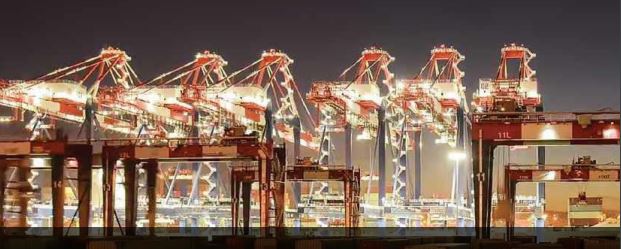Exporters! Discover How COVID has Affected Your Business
A Exporters! Discover How COVID has Affected Your Business s borders reopen and Australia starts adjusting to the ‘new normal’ , we look at how COVID, lockdowns, supply chain disruptions, and trade tensions affected Australian exporters and how they responded.
Now in its seventh year, Australia’s International Business Survey 2021 was conducted in August and September this year.
Exporters were quizzed about the largest disruptions and challenges they faced in 2020- 21, which countries they were trading with, if they were looking to diversify their markets, and about their outlook for the immediate future.
683 exporters took part in the survey, including businesses selling goods and services into 110 export markets. Of the responses received, 90% were small and medium-sized exporters, with 40% employing 5 or less people.
Businesses owned by women represented just 18% of the survey participants, and Indigenous-owned businesses represented just 4% of participants.
BUILDING RESILIENCE
There was a good spread of representation across industries, with the top 5 being manufacturing (31%), wholesale (15%), mining (9%), agriculture, fishing & forestry (7%), and media telecommunications (6%).
The Survey was a collaboration between Austrade, the Export Council of Australia, and the University of Canberra.
What was clear from the survey was that businesses are building resilience. They have navigated their way through very challenging times and new trade landscapes, particularly through diversification.
As economic activity slowed down significantly across the globe, most offices, shops, factories, and ports operated with limited capacity, if not entirely shut down. The overwhelming majority of businesses (87%) reported that export conditions in 2020-21 had been more challenging than usual. The tougher than usual conditions were experienced across all industries, with agriculture, retail, tourism and transport industries especially affected.
FEWER MARKETS
During the same period, 23% of survey respondents reduced their export destinations as a response to COVID. This is slightly more than those that increased their range of markets (21%). Smaller businesses and businesses that exported to fewer markets reported the greatest difficulty in the past 12 months.
Businesses that maintained a wider range of export destinations were able to manage risks better. Just under half (43%) of those diversified businesses reported being financially better off now than 12 months ago. Those businesses that did well were mostly large and operated in the mining, media and telecommunications industries.
The limitations on the movement of people and goods during the period were major disruptions for exporters. The reduction of flights also had a significant impact on air cargo, as 80% of Australian airfreight is normally carried in passenger aircraft.

PRIORITIES SET
82% of businesses considered the lack of availability of air transport as a disruptive factor. In addition, sea freight costs rose, and exporters experienced long delays and difficulty in finding space on vessels.
80% of businesses agree that entering new export markets was a priority over the next 3 years. Top export market destinations of interest include the UK, the US, India and Indonesia. Exporters benefited from Government assistance programs, such as the Export Market Development Grant scheme administered by Austrade. The Australian Government’s International Freight Assistance Mechanism (IFAM) facilitated access to 58 international destinations, and the Agribusiness Expansion Initiative supported agribusiness exporters.
In line with increasing awareness of the impacts of climate change, half of Australian exporters intend to reduce the environmental impacts of their supply chains. Larger businesses, women-owned and Indigenous owned firms were more likely to consider this as a priority.
Australian exporters’ outlooks for 2022 and beyond are generally positive, especially as COVID-19 restrictions ease and overseas economies recover.
